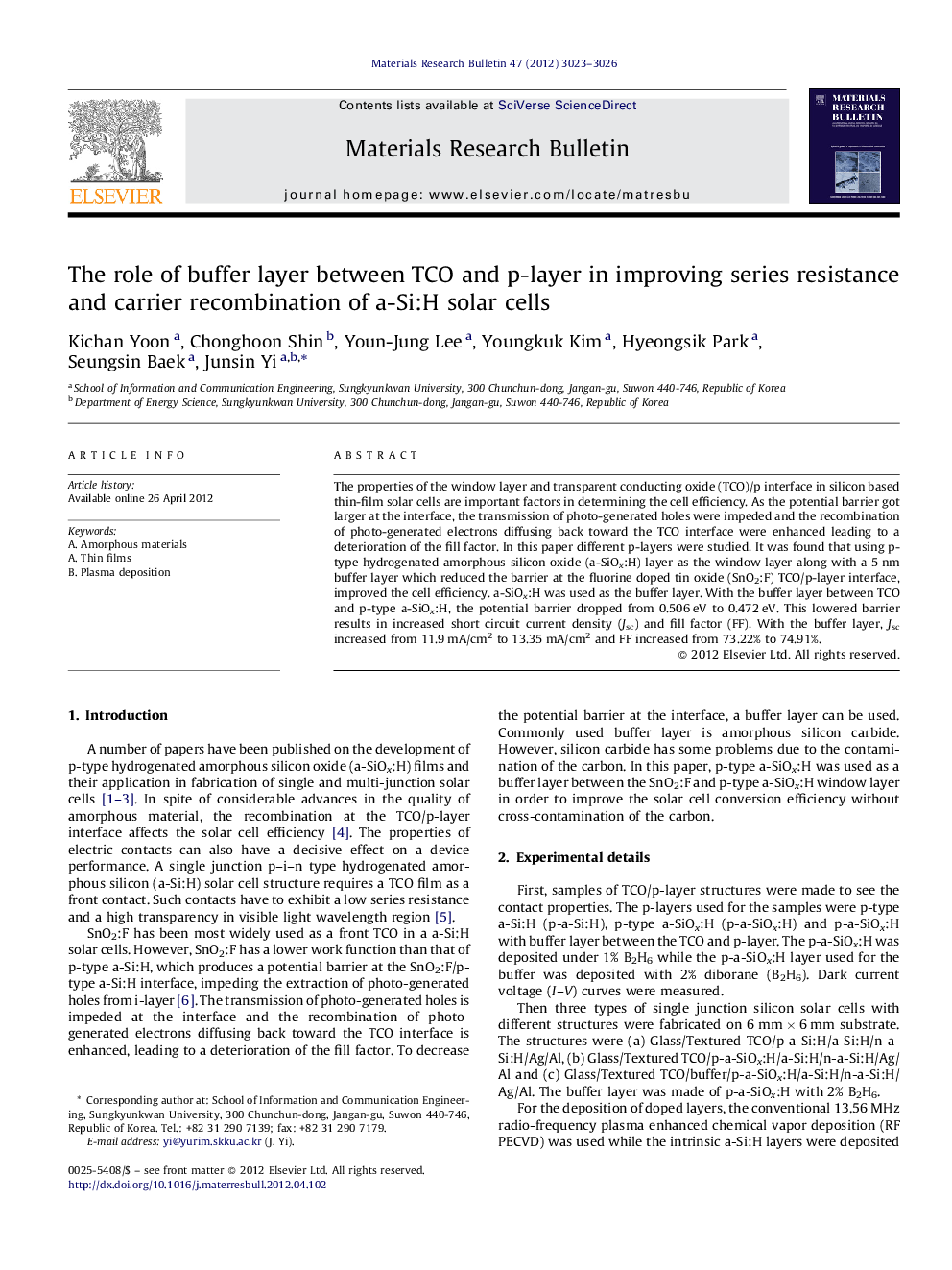| Article ID | Journal | Published Year | Pages | File Type |
|---|---|---|---|---|
| 1489708 | Materials Research Bulletin | 2012 | 4 Pages |
The properties of the window layer and transparent conducting oxide (TCO)/p interface in silicon based thin-film solar cells are important factors in determining the cell efficiency. As the potential barrier got larger at the interface, the transmission of photo-generated holes were impeded and the recombination of photo-generated electrons diffusing back toward the TCO interface were enhanced leading to a deterioration of the fill factor. In this paper different p-layers were studied. It was found that using p-type hydrogenated amorphous silicon oxide (a-SiOx:H) layer as the window layer along with a 5 nm buffer layer which reduced the barrier at the fluorine doped tin oxide (SnO2:F) TCO/p-layer interface, improved the cell efficiency. a-SiOx:H was used as the buffer layer. With the buffer layer between TCO and p-type a-SiOx:H, the potential barrier dropped from 0.506 eV to 0.472 eV. This lowered barrier results in increased short circuit current density (Jsc) and fill factor (FF). With the buffer layer, Jsc increased from 11.9 mA/cm2 to 13.35 mA/cm2 and FF increased from 73.22% to 74.91%.
